Welcome to “Gardening in Texas,” your go-to resource for thriving gardens in the Lone Star State. Discover expert tips, regional guides, and sustainable practices tailored to Texas’s unique climate and soil. Whether you’re a novice or seasoned gardener, we’ll help you grow a beautiful, productive garden year-round.
1. Climate Zones in Texas
Texas has several climate zones, ranging from arid deserts in the west to humid subtropical regions in the east. It’s crucial to know your specific zone:
- West Texas: Arid and semi-arid, with hot summers and cool winters.
- Central Texas (Hill Country): Semi-arid to temperate, with hot summers and mild winters.
- East Texas: Humid and subtropical, with hot, humid summers and mild winters.
- Gulf Coast: Humid subtropical, with hot, humid summers and mild, wet winters.
- North Texas: Continental climate, with hot summers and cold winters.
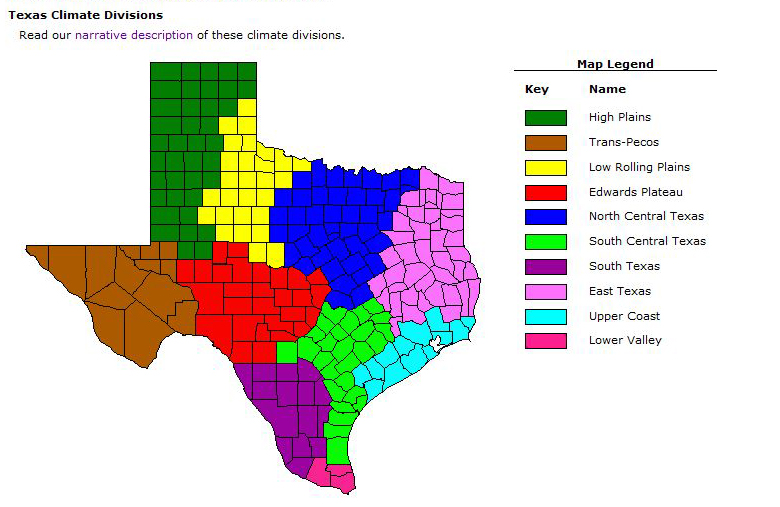
2. Soil Types in Texas
In Texas, the diversity in soil types across different regions plays a crucial role in agricultural and gardening practices. Here’s a closer look at the main soil types found in Texas, their characteristics, and tips for amending them to enhance their suitability for planting:
Clay Soil
- Location: Predominantly found in Central and East Texas.
- Characteristics: Clay soil is known for its fine particles and high density. It retains water well, which can be beneficial during dry periods. However, it is prone to becoming compacted, which can hinder root growth and reduce soil aeration.
- Organic Matter: Adding compost, aged manure, or leaf mold can improve soil structure and drainage.
- Gypsum: Helps break up compacted clay and improves soil texture.
- Raised Beds: Can help alleviate compaction issues by providing a well-drained growing medium.
Sandy Soil
- Location: Commonly found in East and Coastal Texas.
- Characteristics: Sandy soil has larger particles and drains water quickly. It is easy to work with but may require frequent watering and fertilization, as nutrients can leach away rapidly.
- Organic Matter: Incorporating compost or peat moss can enhance water retention and nutrient-holding capacity.
- Mulch: Using mulch can help retain soil moisture and reduce evaporation.
- Cover Crops: Planting cover crops can add organic matter to the soil and improve its structure over time.
Loamy Soil
- Location: Found in various parts of Texas, loamy soil is often considered the best type for gardening.
- Characteristics: Loamy soil is a balanced mix of sand, silt, and clay. It has good drainage, retains moisture and nutrients well, and is easy to work with.
- Maintain Organic Matter: Regularly add compost to maintain the soil’s fertility and structure.
- Crop Rotation: Practice crop rotation to prevent nutrient depletion and manage soil health.
- pH Testing: Periodically test the soil pH and adjust as necessary to ensure optimal nutrient availability.
General Soil Testing and Amendment Tips
- Soil Testing: Before planting, conduct a soil test to determine the specific needs of your soil. This can provide valuable information on pH, nutrient levels, and soil composition.
- Organic Amendments: Consistently adding organic matter like compost, aged manure, or green manures can improve soil health across all soil types.
- Proper Watering: Adjust watering practices based on soil type. Clay soils may require less frequent watering, while sandy soils may need more frequent, lighter watering.
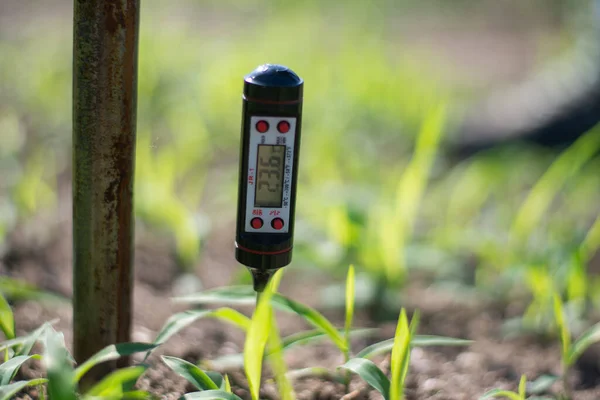
3. Best Plants for Texas
Native Plants
Native plants are an excellent choice for Texas gardens as they are adapted to the local environment, often requiring less water and maintenance. Here are a few notable Texas natives:
- Bluebonnets (Lupinus texensis): The state flower of Texas, these annuals bloom in the spring and are well-suited to a variety of soil types, particularly well-drained sandy or loamy soils.
- Black-eyed Susans (Rudbeckia hirta): These bright yellow flowers thrive in full sun and are drought-tolerant once established, making them ideal for many Texas landscapes.
- Texas Sage (Leucophyllum frutescens): Also known as cenizo, this shrub is highly drought-tolerant and thrives in rocky, well-drained soils. It produces beautiful purple flowers and can withstand the hot Texas sun.
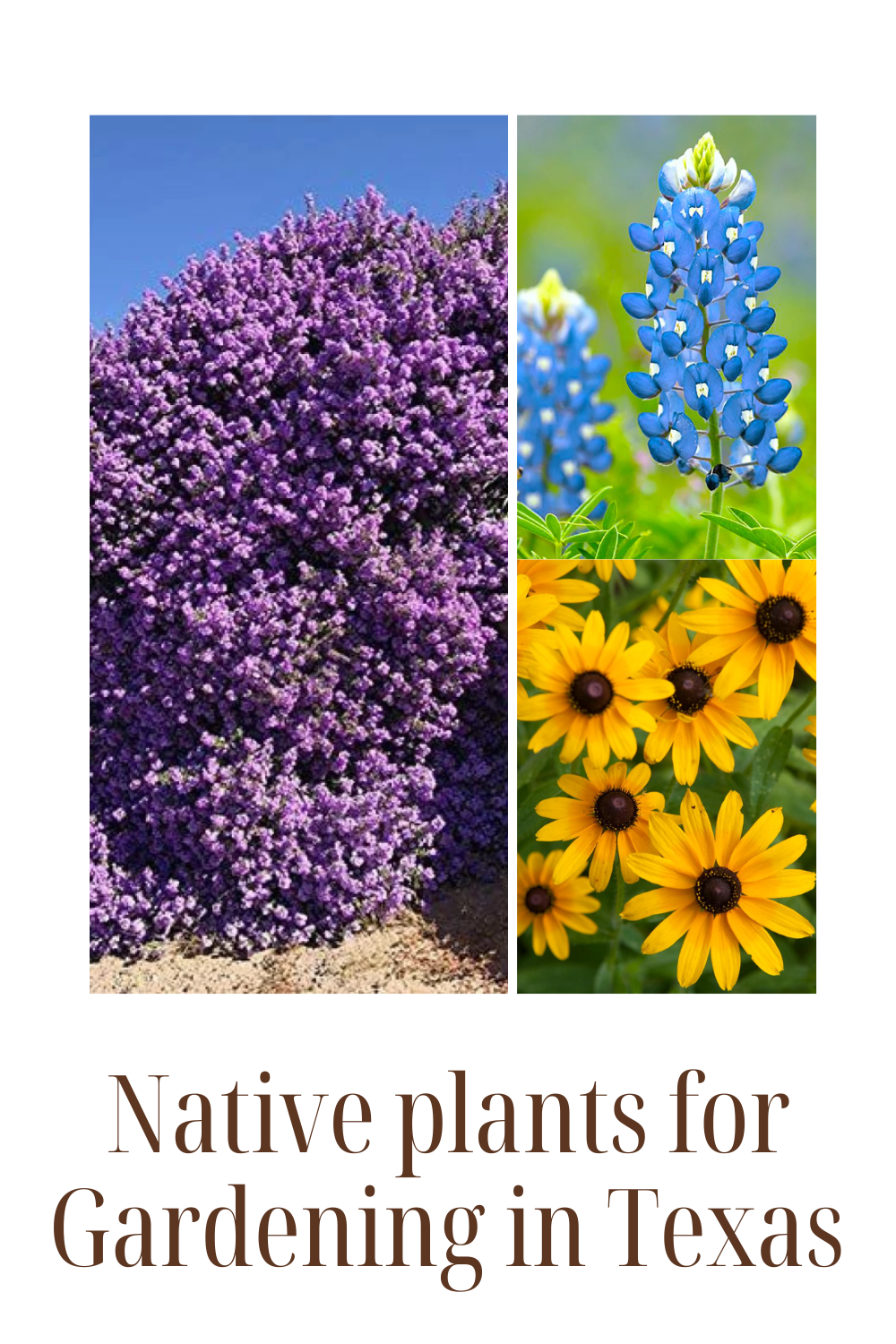
Vegetables
Many vegetables do well in Texas’s diverse climates, with planting times varying by region:
- Tomatoes: A staple in many gardens, tomatoes can be planted as early as February in Central Texas. They require well-drained soil and full sun.
- Peppers: Both sweet and hot peppers grow well in Texas, preferring warm temperatures and well-drained soils.
- Squash: This versatile vegetable thrives in most Texas regions and can be planted in spring and fall.
- Beans: Green beans and other varieties are easy to grow and do well in the Texas heat, provided they have consistent moisture.
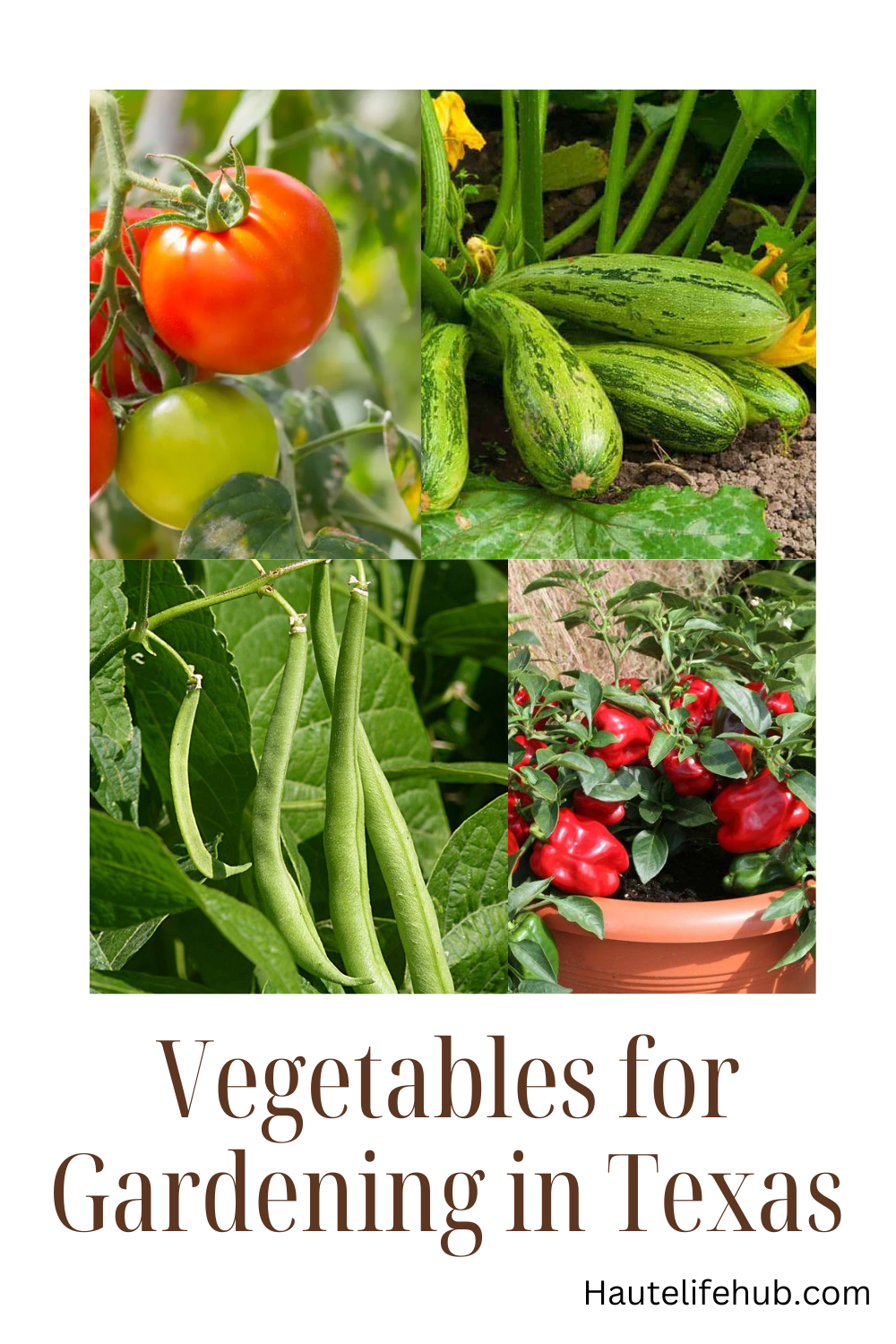
Fruits
Fruit trees can be a rewarding addition to Texas gardens, with several varieties well-suited to the state’s climate:
- Peaches: Ideal for Central and North Texas, peach trees require well-drained soil and full sun. They benefit from chilling hours in the winter to produce fruit.
- Plums: Another great choice for Texas, plums are hardy and adaptable to various soil types, preferring well-drained conditions.
- Pears: These trees do well in many parts of Texas, particularly in regions with well-drained loamy soils.
- Citrus Trees: Best suited for the warmer southern regions of Texas, citrus trees like lemons, oranges, and grapefruits thrive in the mild winters and hot summers.
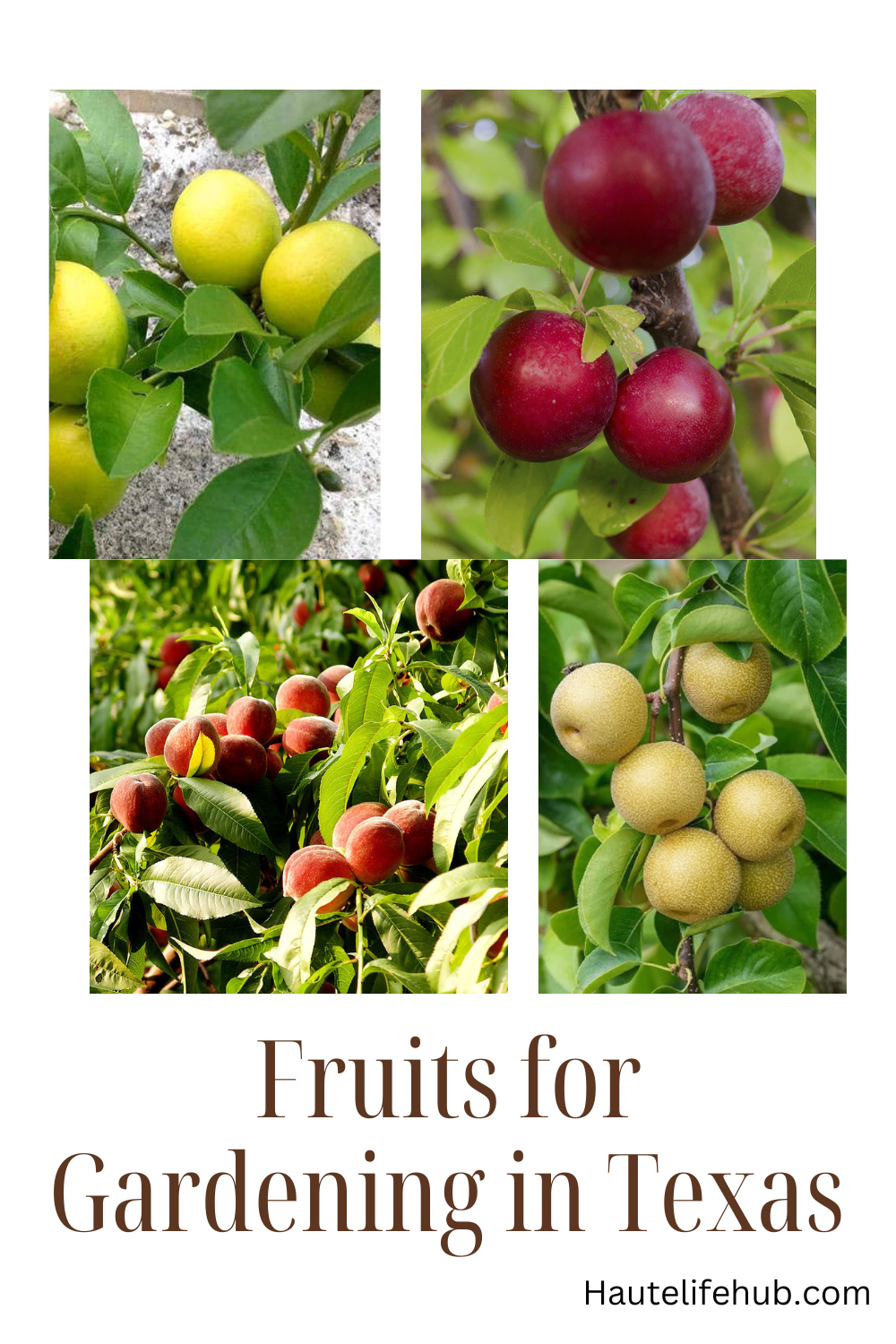
Flowers
Adding color and attracting pollinators, these flowers are hardy and vibrant choices for Texas gardens:
- Zinnias: These annuals are easy to grow and come in a variety of colors. They thrive in full sun and are heat and drought-tolerant.
- Marigolds: Known for their bright, cheerful blooms, marigolds are tough and resilient, doing well in hot, sunny locations.
- Create a Scented Haven: 8 Must-Have Fragrant FlowersLantanas: These perennial flowers are extremely drought-tolerant and attract butterflies and bees. They come in a range of colors and are excellent for adding long-lasting color to the garden.
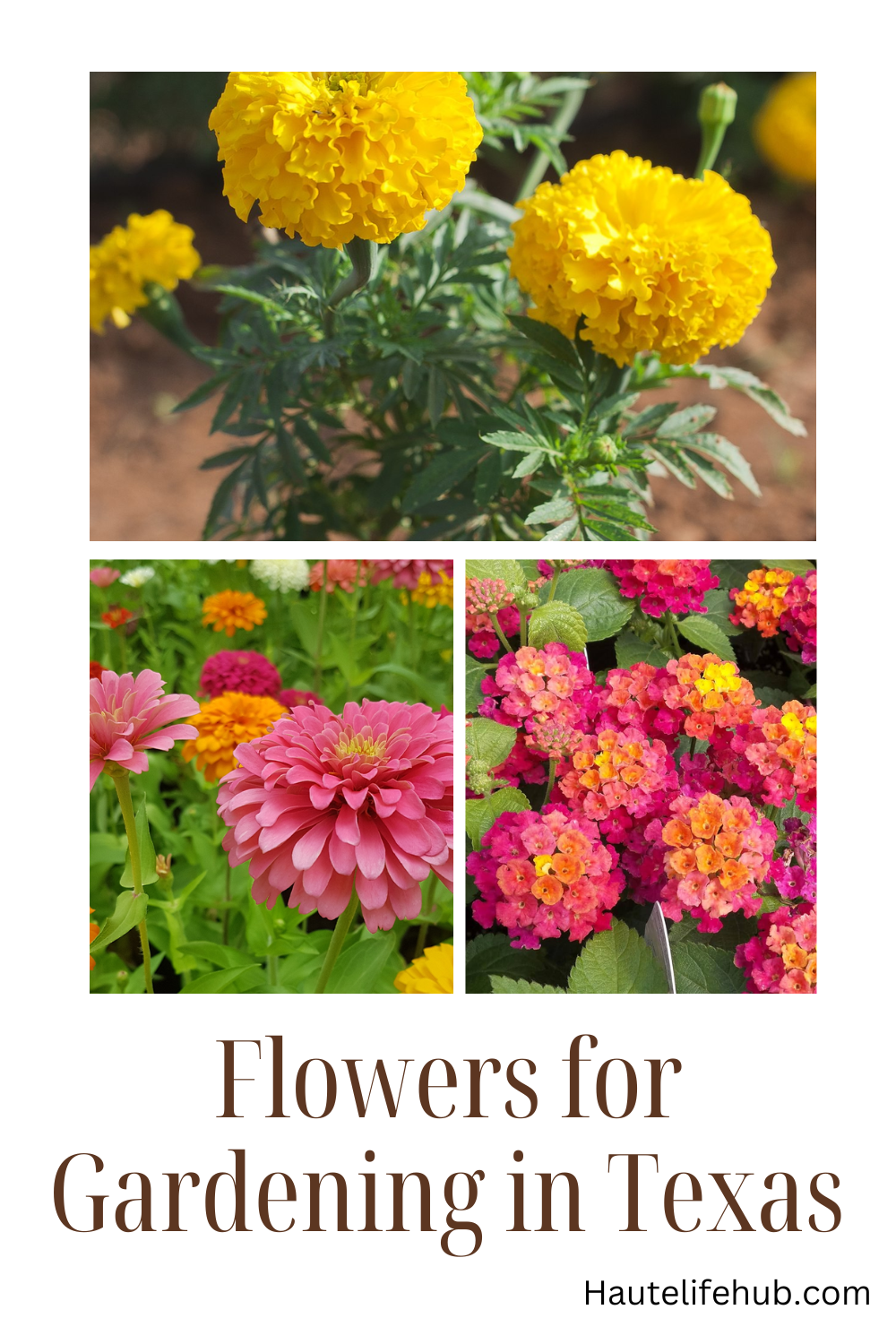
Tips for Successful Gardening in Texas
- Soil Preparation: Test your soil and amend it as needed to improve drainage and nutrient content.
- Mulching: Use mulch to conserve moisture, suppress weeds, and regulate soil temperature.
- Watering: Adapt your watering practices to suit the plant’s needs and local climate conditions. Native plants typically require less water once established.
- Climate Considerations: Pay attention to your region’s specific climate, including average temperatures, rainfall patterns, and frost dates, to determine the best planting times and plant choices.
4. Seasonal Gardening Tips in Texas
By following these seasonal gardening tips, you can ensure your garden remains productive and healthy throughout the year, taking advantage of each season’s unique opportunities for planting, maintenance, and preparation.
Spring
Preparation and Planting
- Prepare Garden Beds: Start by cleaning up garden beds, removing debris, and turning the soil. Incorporate compost and organic matter to enrich the soil and improve its structure.
- Soil Testing: Conduct a soil test to determine nutrient levels and pH. Amend the soil based on the test results to ensure optimal growing conditions.
- Plant Warm-Season Crops: After the last frost date, plant warm-season vegetables such as tomatoes, peppers, squash, and beans. In Central Texas, this can be as early as February or March.
- Mulch: Apply a layer of mulch to help retain soil moisture, suppress weeds, and regulate soil temperature as the weather warms up.
Summer
Maintenance and Care
- Mulch Garden Beds: Continue to add mulch around plants to conserve moisture and reduce weed growth. Organic mulches like straw, wood chips, or grass clippings work well.
- Watering: Water deeply but less frequently to encourage deep root growth. This helps plants become more drought-tolerant. Early morning is the best time to water to minimize evaporation and reduce the risk of disease.
- Shade and Protection: Provide shade for sensitive plants during the hottest part of the day using shade cloth or strategically placed taller plants.
- Pest Control: Monitor for pests and diseases, and take appropriate action, such as using insecticidal soap or introducing beneficial insects.
Fall
Planting and Preparation
- Plant Cool-Season Vegetables: As temperatures begin to cool, plant cool-season crops like lettuce, broccoli, carrots, and spinach. These can be planted in late September to October.
- Plant Perennials and Trees: Fall is an excellent time for planting perennials and trees. The cooler temperatures and increased rainfall help establish strong root systems.
- Clean Up: Remove spent plants and debris from summer crops to prevent pests and diseases from overwintering in your garden.
- Soil Amendment: Add compost and other organic matter to garden beds to prepare them for the next growing season.
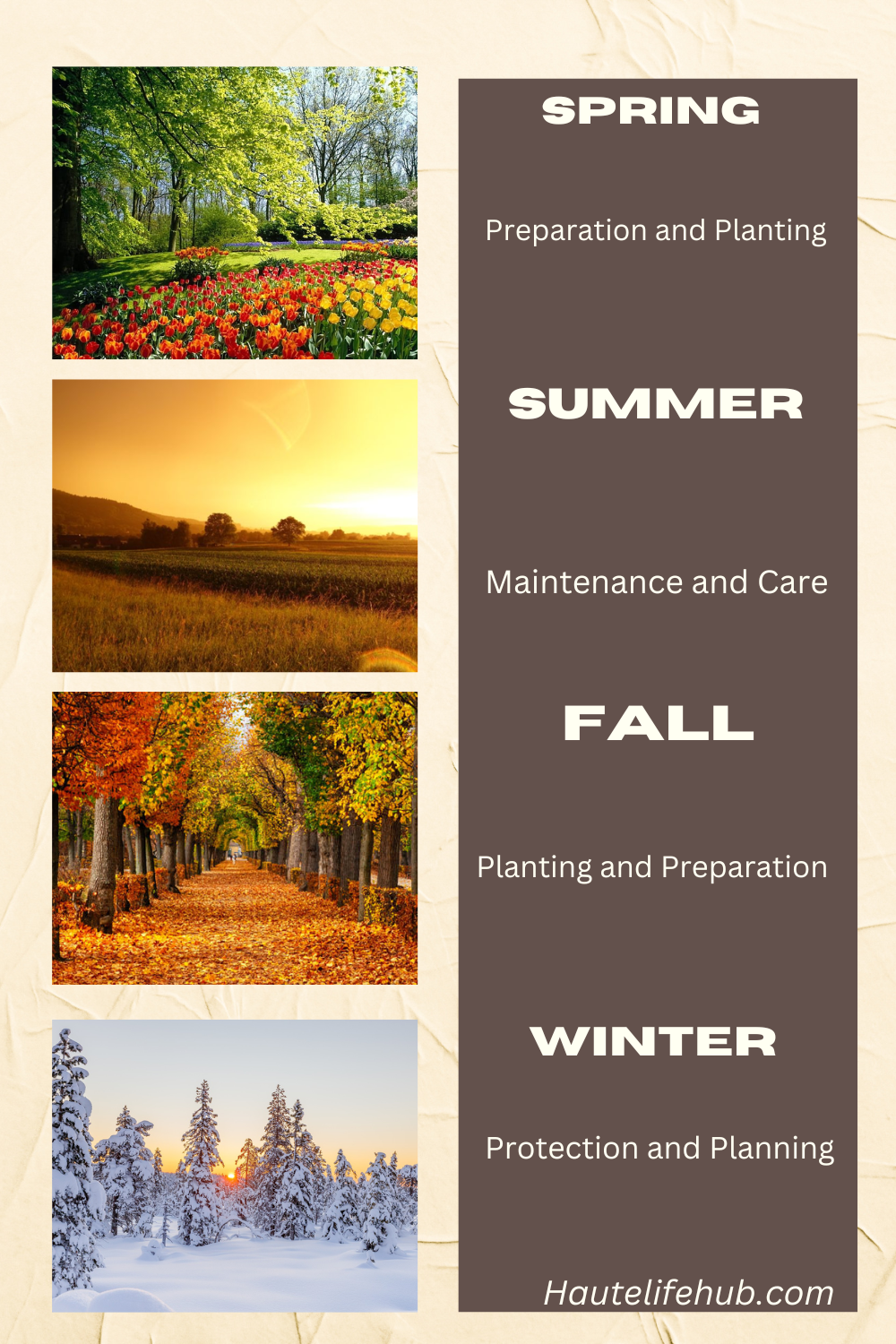
Winter
Protection and Planning
- Protect Tender Plants: Cover frost-sensitive plants with frost cloths, blankets, or move potted plants indoors to protect them from freezing temperatures.
- Soil Improvement: Use the winter months to improve your soil by adding compost, green manure, or cover crops. This helps increase soil fertility and structure for the upcoming growing season.
- Planning: Take this time to plan your garden for the next year. Review what worked well and what didn’t in the past season, and make adjustments accordingly. Order seeds and supplies early to be ready for spring planting.
- Pruning: Winter is a good time to prune deciduous trees and shrubs while they are dormant. This helps promote healthy growth in the spring.
5. Watering Strategies in Texas
Watering strategies are essential for maintaining a healthy garden in Texas, where the climate can be challenging with its hot summers and varying rainfall patterns. Here are some efficient watering techniques to help conserve water and ensure your plants thrive:
Drip Irrigation
Benefits and Implementation
- Water Conservation: Drip irrigation systems deliver water directly to the plant roots, minimizing evaporation and runoff. This targeted approach can significantly reduce water usage compared to traditional sprinkler systems.
- Reduced Weed Growth: Since water is applied only where needed, drip irrigation reduces the amount of water available for weeds to grow.
- Improved Plant Health: Consistent moisture levels at the root zone promote healthy plant growth and reduce the risk of fungal diseases that can result from wet foliage.
- Installation Tips:
- Layout: Plan the layout of your drip lines to ensure all plants receive adequate water. Use emitters, soaker hoses, or drip tape based on your garden’s needs.
- Timer: Use a timer to automate watering schedules, ensuring plants receive water at optimal times, typically early in the morning or late in the evening.
- Maintenance: Regularly check and clean emitters to prevent clogging and ensure efficient water delivery.

Mulching
Benefits and Techniques
- Moisture Retention: Mulch helps retain soil moisture by reducing evaporation, which is especially important during the hot Texas summers.
- Temperature Regulation: Mulch keeps the soil cooler in summer and warmer in winter, creating a more stable environment for plant roots.
- Weed Suppression: A thick layer of mulch inhibits weed growth by blocking sunlight from reaching weed seeds.
- Types of Mulch:
- Organic Mulches: These include straw, wood chips, grass clippings, and compost. They decompose over time, adding organic matter to the soil.
- Inorganic Mulches: Materials like gravel, stones, or landscape fabric do not decompose and are useful for long-term weed suppression.
- Application:
- Apply a 2-4 inch layer of mulch around plants, making sure to keep it away from the plant stems to prevent rot.
- Replenish mulch as needed to maintain an adequate layer, especially after heavy rains or strong winds.
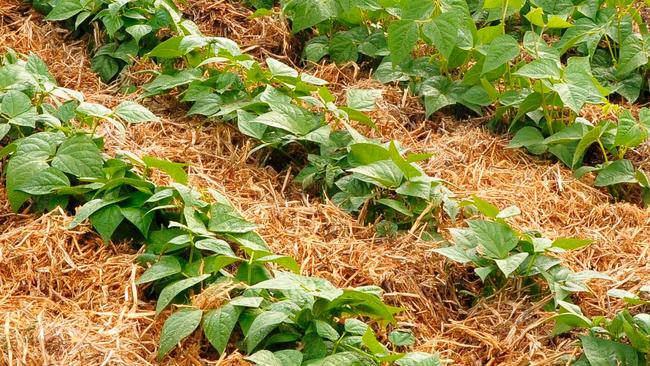
Rainwater Harvesting
Benefits and System Setup
- Sustainability: Collecting rainwater reduces dependence on municipal water supplies and provides a free source of water for irrigation.
- Water Quality: Rainwater is generally free of salts, minerals, and chemicals often found in tap water, making it ideal for plants.
- Environmental Impact: Harvesting rainwater helps reduce runoff and erosion, contributing to more sustainable water management.
- Collection: Install gutters and downspouts to direct rainwater from your roof into a storage container, such as a rain barrel or a larger cistern.
- Filtration: Use a mesh screen or filter to keep debris and insects out of the storage container.
- Distribution: Attach a hose or drip irrigation system to the storage container to distribute the harvested rainwater to your garden.
- Overflow Management: Ensure your system has an overflow outlet to divert excess water away from your home’s foundation.

Additional Tips for Efficient Watering
- Soil Moisture Monitoring: Regularly check soil moisture levels to avoid overwatering. Use a moisture meter or simply test by feeling the soil with your fingers.
- Deep Watering: Water deeply and less frequently to encourage deep root growth. This makes plants more drought-resistant and reduces water loss through evaporation.
- Adjust for Weather: Modify your watering schedule based on weather conditions. Reduce watering during periods of rainfall and increase during dry spells.
- Zoning: Group plants with similar water needs together to ensure efficient watering. This prevents overwatering or underwatering individual plants.
6. Pest and Disease Management in Texas
Effective pest and disease management is crucial for maintaining a healthy garden. Integrated Pest Management (IPM) offers a sustainable approach by combining various methods to control pests and minimize damage. Here are some key strategies and practices for managing pests and diseases in your Texas garden:
Integrated Pest Management (IPM)
Strategies and Methods
- Biological Control: Utilize natural predators and beneficial insects to control pest populations. Encourage these allies by providing suitable habitats and avoiding broad-spectrum pesticides that harm beneficial insects.
- Cultural Practices: Implement gardening practices that promote plant health and reduce pest problems. This includes crop rotation, selecting disease-resistant varieties, proper plant spacing, and maintaining garden cleanliness.
- Mechanical Control: Use physical methods to remove or exclude pests. This can include hand-picking insects, using barriers like row covers, and installing traps.
- Chemical Control: When necessary, use pesticides as a last resort and choose products that are least harmful to beneficial insects and the environment. Always follow label instructions and apply them sparingly.
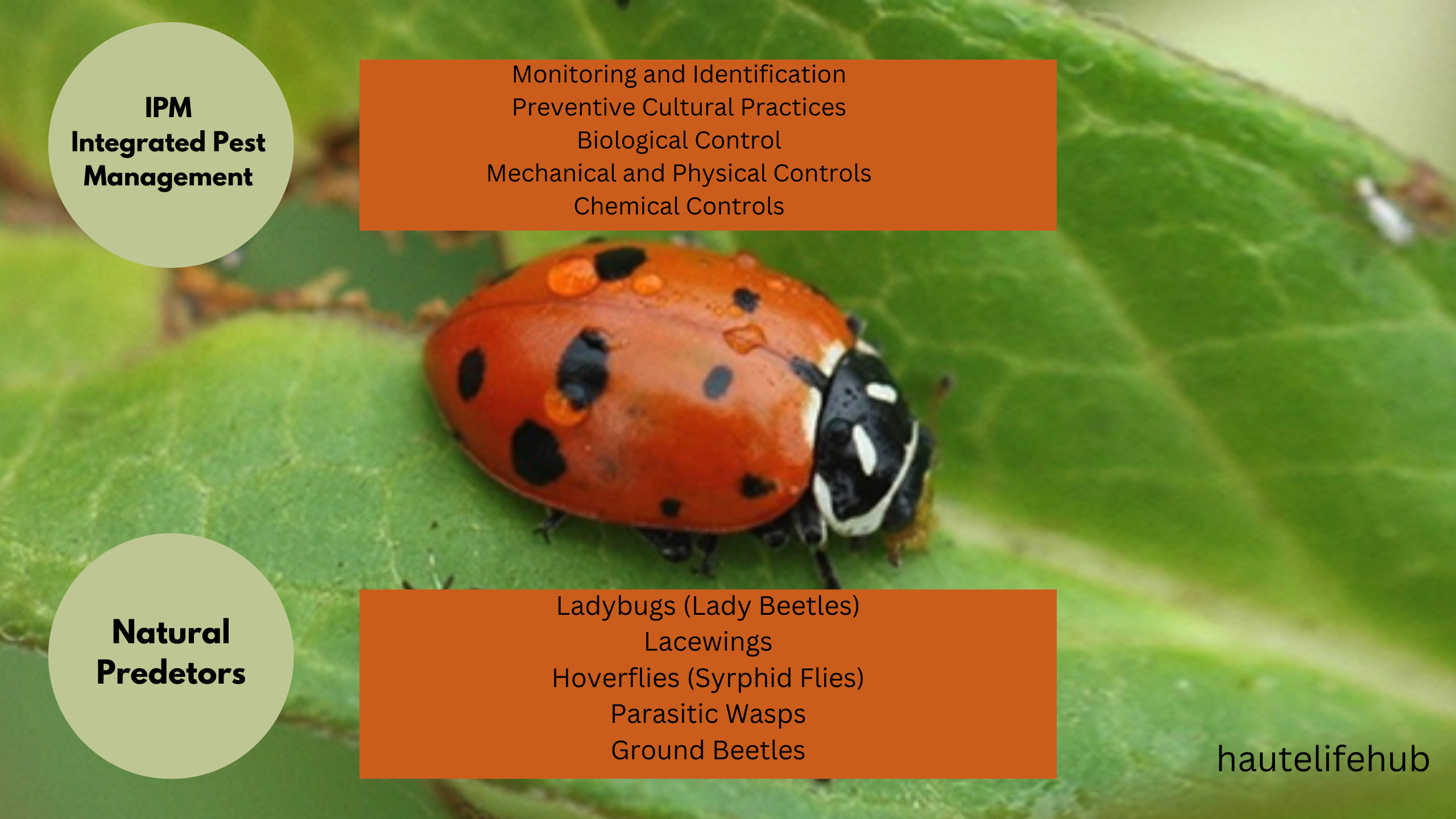
Natural Predetors
Encouraging and Utilizing Natural Predators
- Ladybugs: Known for feeding on aphids, ladybugs are excellent for controlling these common pests. Attract them by planting dill, fennel, and yarrow.
- Lacewings: These insects are voracious predators of aphids, caterpillars, and other soft-bodied pests. Plants like dill, cosmos, and coriander can attract lacewings.
- Parasitic Wasps: These tiny wasps parasitize pests such as caterpillars and whiteflies. Provide them with nectar sources like sweet alyssum and fennel.
- Hoverflies: Larvae of hoverflies feed on aphids, thrips, and other pests. Planting flowering herbs and shrubs can attract hoverflies to your garden.
Regular Monitoring
Early Detection and Prompt Action
- Frequent Inspections: Regularly inspect your plants for signs of pests and diseases. Look for damaged leaves, discolored spots, and the presence of insects.
- Identify Problems: Accurately identify pests and diseases to choose the most effective management strategies. Use resources such as gardening guides or consult local extension services if unsure.
- Record Keeping: Keep a garden journal to track pest and disease occurrences, weather conditions, and the effectiveness of management practices. This information can help in making informed decisions in the future.
- Prompt Action: Address issues as soon as they are detected to prevent them from spreading. This may involve removing affected plant parts, applying appropriate treatments, or introducing beneficial insects.
Additional Tips for Pest and Disease Management
- Sanitation: Keep your garden clean by removing plant debris, fallen leaves, and weeds, which can harbor pests and diseases.
- Proper Watering: Avoid overhead watering, which can create a favorable environment for fungal diseases. Water at the base of plants to keep foliage dry.
- Healthy Soil: Maintain healthy soil with organic matter and proper pH levels to support strong plant growth and resilience against pests and diseases.
- Companion Planting: Use companion planting to deter pests and enhance plant health. For example, marigolds can help repel nematodes, and basil can deter tomato hornworms.
- Rotate Crops: Practice crop rotation to prevent the buildup of soil-borne diseases and disrupt the life cycles of pests.
7. Resources and Support in Texas
Accessing resources and support can greatly enhance your gardening experience and success. Here are some valuable resources and support networks for gardeners in Texas:
Texas A&M AgriLife Extension
Comprehensive Gardening Resources
- Regional Gardening Guides: Texas A&M AgriLife Extension provides detailed guides tailored to different regions of Texas, offering advice on plant selection, soil preparation, planting schedules, and pest management. These guides take into account the specific climate and soil conditions of each region.
- Expert Advice: Extension agents and specialists are available to answer questions and provide guidance on a wide range of gardening topics. You can contact your local county extension office for personalized assistance.
- Workshops and Classes: The Extension offers workshops, webinars, and classes on various gardening topics, such as vegetable gardening, landscape design, pest control, and sustainable practices. These educational opportunities are often available both in-person and online.
- Publications and Fact Sheets: Access a library of publications and fact sheets on topics such as soil health, irrigation, plant diseases, and more. These resources are available for free or at a low cost on the Texas A&M AgriLife Extension website.
- Master Gardener Program: Consider becoming a Master Gardener through Texas A&M AgriLife Extension’s program. This program offers extensive training in horticulture and provides opportunities to volunteer and educate others in your community.

Local Gardening Clubs
Community Support and Knowledge Sharing
- Networking: Joining a local gardening club connects you with other gardeners in your area. This network can provide support, share knowledge, and offer practical advice based on local conditions.
- Plant Swaps: Many gardening clubs organize plant swaps where members can exchange plants, seeds, and cuttings. This is a great way to diversify your garden at little to no cost.
- Garden Tours: Participate in garden tours to see different gardening styles and techniques in action. These tours can provide inspiration and practical ideas for your own garden.
- Workshops and Events: Clubs often host workshops, guest speakers, and events focused on specific gardening topics, such as organic gardening, native plants, or seasonal gardening tasks.
- Social Media and Online Groups: Many local gardening clubs have social media pages or online forums where members can ask questions, share successes, and post photos. These platforms can be a valuable resource for quick advice and community engagement.
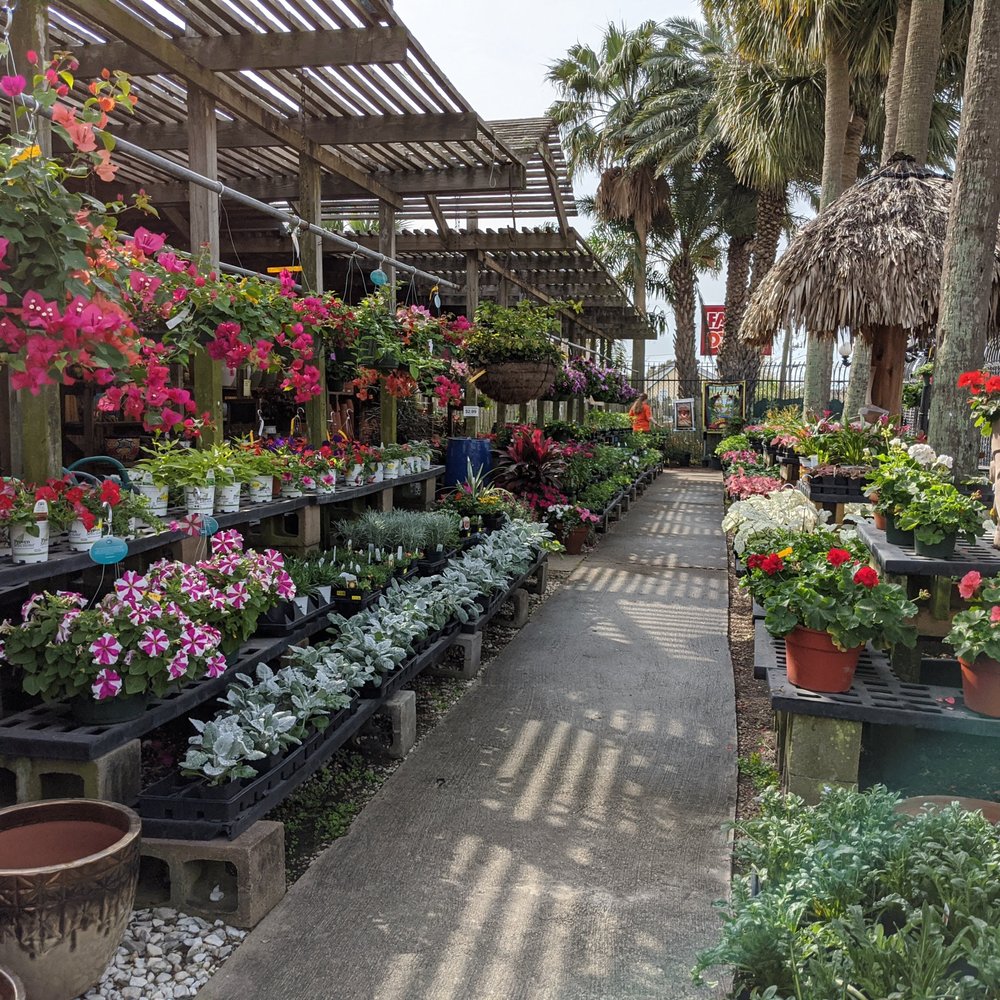
Additional Resources
Expanding Your Gardening Knowledge
- Online Gardening Communities: Websites like GardenWeb, Houzz, and Reddit have active gardening forums where you can ask questions and share experiences with a global community of gardeners.
- Books and Magazines: Invest in a few gardening books or subscribe to gardening magazines that focus on your areas of interest, whether it’s vegetable gardening, landscaping, or organic practices. Some recommended books include “The Vegetable Gardener’s Bible” by Edward C. Smith and “Texas Gardening: The Natural Way” by Howard Garrett.
- Local Nurseries and Garden Centers: Staff at local nurseries and garden centers can offer valuable advice and recommendations based on their knowledge of the local climate and soil conditions. They can also help you select the best plants and products for your garden.
- Public Gardens and Arboretums: Visit local public gardens and arboretums to see a wide variety of plants and garden designs. Many of these institutions offer workshops, guided tours, and educational programs.
Frequently Asked Questions
Yes, Texas is great for gardening due to its diverse climates, long growing seasons, and rich soil in many regions.
Texas is famous for growing cotton, pecans, citrus fruits, tomatoes, watermelons, onions, and peppers, along with a variety of other fruits and vegetables.
Texas’ main fruit is the grapefruit, particularly the Ruby Red variety, which is well-known and widely grown in the Rio Grande Valley.
Texas is famous for the Bluebonnet, a native wildflower that is also the state flower and widely recognized for its vibrant blue blooms.
Texas spans USDA hardiness zones 6a to 10a, offering a wide range of planting conditions suitable for various vegetables across the state.


